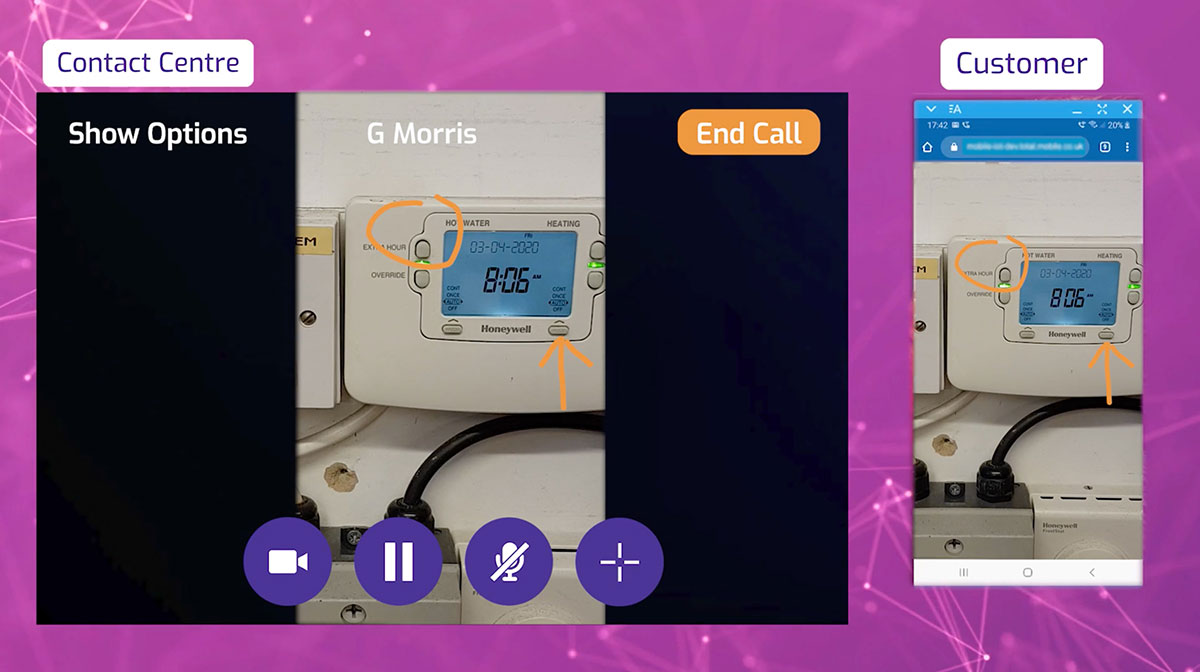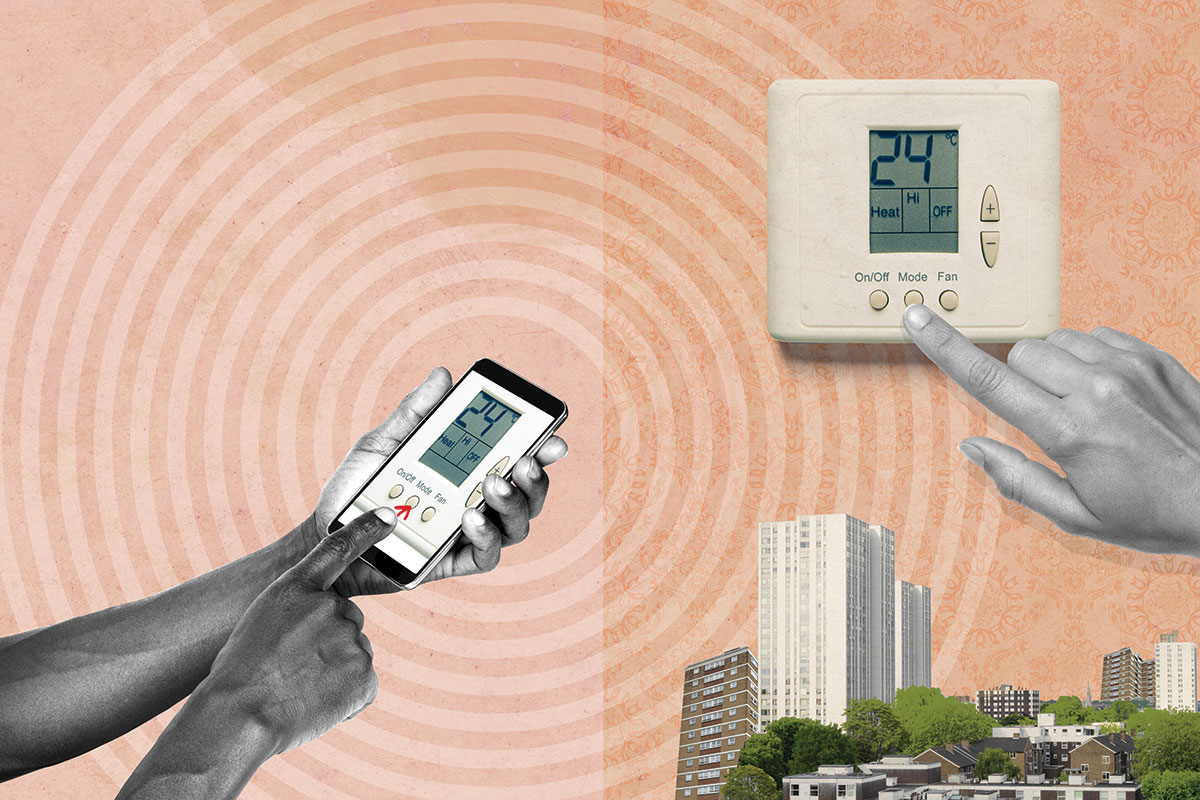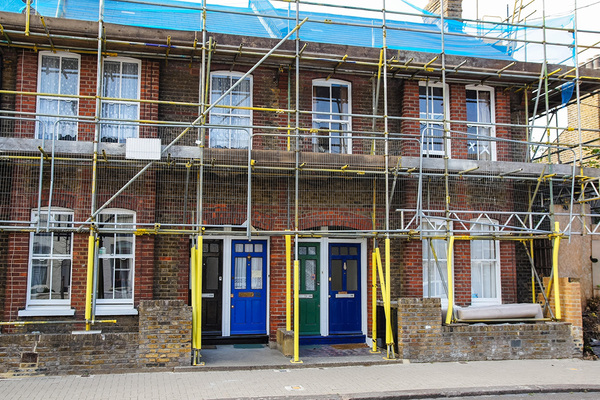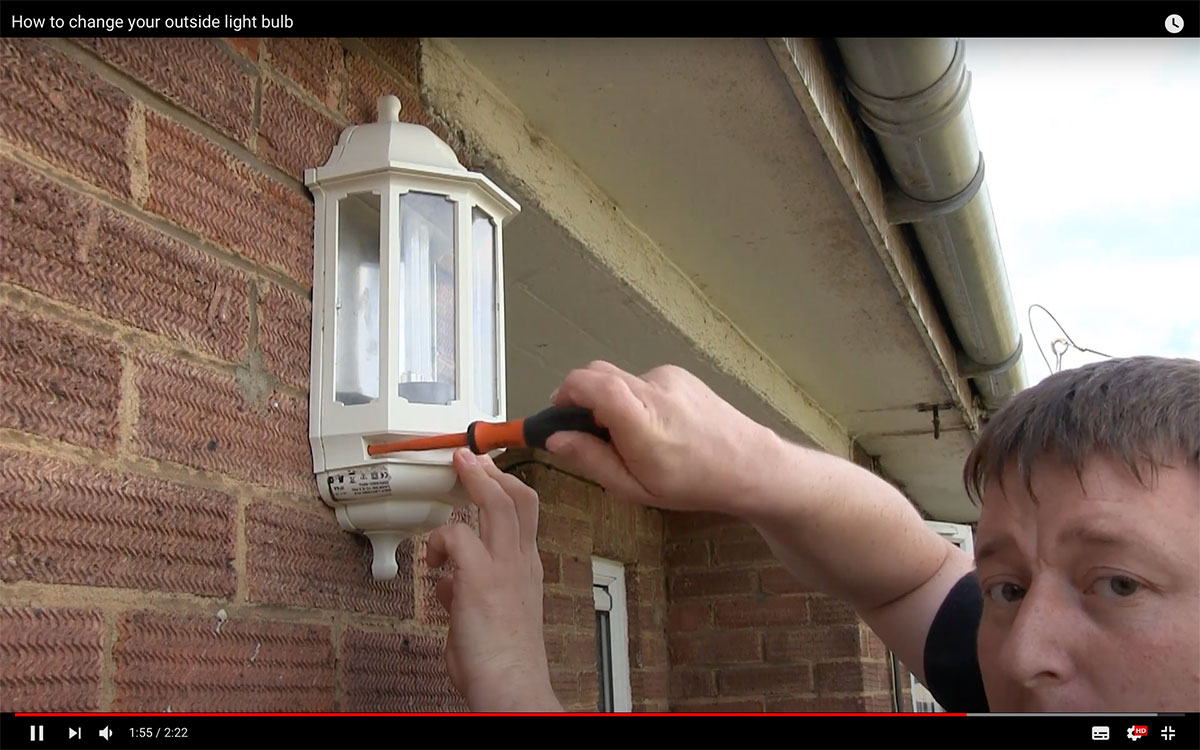You are viewing 1 of your 1 free articles
How repairs teams are turning to augmented reality to cope with coronavirus
The lockdown and coronavirus risk have led to some early experiments with augmented reality video to help repairs teams avoid unnecessary visits to tenants’ homes. Jess McCabe reports. Illustration by Michelle Thompson
A tenant’s home is flooding in the middle of the night. They call their landlord – what should happen next?
What if, rather than sending someone to fix it, you could get a plumber to use a live, augmented reality video to guide the tenant through turning off the water? The tenant brings up a video using their phone camera, which the plumber can see in real time, then the plumber uses a virtual image of hands on the screen, or draws on the screen, to guide the tenant in how to find and turn off the stopcock. Then, in normal working hours, the plumber could come and solve the problem.
“It’s fuel efficient – you’re not having to jump in the van and drive somewhere. Time is money – if we can reduce that time it’s obviously good for the business. And if you can help someone almost immediately with something, then you’re providing better customer service”
As repairs teams struggle with the restrictions of lockdown and seek to minimise visits to tenants’ homes, the past few weeks have seen this idea go from something that is almost unheard of in the sector to something being actively trialled by multiple social landlords. Inside Housing spoke to some of them to find out why they are doing so, and what the benefits are.
Kingdom Housing Association in Fife is one of the first to use augmented video – as of our interview, only one job had been done this way. Robert Reid, an operative who has worked at Kingdom for nine years, was the first to try the technology with a tenant. The job involved getting the water connected to a washing machine. “You send the link to them, they answer, you can see what they see,” he explains. He was then able to talk the tenant through what needed to be done, drawing on the screen and using a projection of his hands.
Gary Haldane, interim digital director at Kingdom, explains that the 4,600-home association expects the technology to be useful for the organisation’s in-house repairs team for many months.
“As we come out of lockdown you’re going to have two camps – some will want to go back to the pub and see their pals, and others will say, we’ve not got a vaccine yet. Do I want someone to come into my property? There’s a big role for it. We’ve got that balance for a year maybe,” he says.
There are longer-term drivers, too. Mr Haldane says: “It’s fuel efficient – you’re not having to jump in the van and drive somewhere. Time is money – if we can reduce that time it’s obviously good for the business. And if you can help someone almost immediately with something rather than making an appointment that might be a week down the line, then you’re providing better customer service.
“Being able to see the problem allows us to diagnose it better. The operative will know what they’re going into, which will substantially improve first-time fix”
“The cost of augmented reality per user is about €20 [about £17.50] per month. It’s not like you’re spending thousands of pounds.” (Kingdom has so far been using a Swedish company called XMReality, but is likely to switch as its repairs system is provided by TotalMobile, which has integrated an augmented reality option).
Repairs contractor MCP Property Services is also weeks into trying this technology for the first time, using TotalMobile. Matt Clarke, managing director of MCP, which does repairs for landlords such as Guinness and Catalyst, says surveyors could save a day a week in time lost travelling to residents’ homes.
“Being able to see the problem allows us to diagnose it better. The operative will know what they’re going into, which will substantially improve first-time fix,” Mr Clarke says.
“There’s going to be a nervousness about customers inviting anyone in the home, and that nervousness will go on for months”
Karbon Homes is also in the early stages of using augmented reality, having been trialling XMReality for two to three weeks.
So far the surveyors and operatives in its 250-person in-house repairs service have mostly been trying out the technology between themselves, but now Karbon has begun initial tests with tenants.

One example has been a surveyor using augmented reality to give permission for a tenant to extend their patio. Using the technology, the surveyor was able to take a look at the patio and confirm how far the patio could be extended, without putting anyone at risk. “It saved a visit and he will confirm with a letter,” says Jonathan Fletcher, assistant director of operations for responsive repairs and voids at the 26,000-home landlord.
Next, Karbon will be trialling it with tenants who call out of hours. Mr Fletcher explains: “During an out-of-hours call, a tenant might ring up [and the operatives could use the technology to find out] is it a dire emergency and I need to come out this evening, can I give some advice? Can I go out the following morning?”
Karbon expects to roll out the technology more broadly by June. Mr Fletcher says: “There’s going to be a nervousness about customers inviting anyone in the home, and that nervousness will go on for months.”
“It’s no good rolling something out if it’s going to cost people masses of data”
Karbon sees potential to use augmented reality not just with tenants, but for less experienced operatives to get the advice of senior tradespeople when they are out on a job. A senior gas or electricity engineer could take a look at a tricky problem, or an experienced operative could give advice to someone who is ‘new on the tools’ having just finished an apprenticeship.
MCP also sees this potential. Mr Clarke says it could even lead to the creation of jobs for older, experienced repairs operatives who can no longer handle the physical labour but could give assistance via augmented video to apprentices and less experienced operatives.
There are still important questions to answer before this is rolled out, however. Mr Fletcher points out that Karbon is still investigating how much phone data tenants use up making a video call. “It’s no good rolling something out if it’s going to cost people masses of data or it’s going to be expensive on the receiving end,” he points out.
Karbon has also had to make adjustments, as using very high definition video would cause the tenant’s battery to die quickly. Karbon had to reduce the quality of video to prevent this. “If the mobile phone is the only way to communicate, and we run the battery down, it leaves them quite high and dry,” Mr Fletcher says.
"Obviously, we don’t want people to be doing things with electrics or doing anything dangerous”
Other landlords are putting in place a simpler fix. Take the example of 21,000-home WHG in the Midlands, where the repairs team has put WhatsApp on a mobile phone, and has team leaders using the app’s video-calling capabilities. Fran Sargeant, repairs manager at WHG, explains: “When lockdown happened, we didn’t really have the infrastructure for video calling.”
WHG wanted to be sure that it was sending people out only if there was a genuine emergency. Normally, out-of-hours calls are handled by a call centre, working off a finely honed script that ensures operatives are not sent out in the middle of the night for a problem that can wait. Those call centre staff are working from home – but they don’t have access to all those sophisticated scripts right now. So the chance for a repairs person to make a quick video call and check if a genuine emergency has occurred is valuable.
All these experiments are at the early stages – Inside Housing could not find anyone who has been using augmented video for more than a few weeks. Indeed, Nick Jeffreys, managing director for housing at TotalMobile, says the firm started developing its software only about eight weeks ago. When the lockdown was announced, “that day we stopped all other development and put everyone on this”.
But social landlords are already excited about the potential. Mr Haldane at Kingdom says: “It depends if you’ve got a screwdriver in the house, and on your skills. Obviously, we don’t want people to be doing things with electrics or doing anything dangerous.”
Still, he can certainly see the technology becoming a mainstream part of housing repairs. Just how many repairs can be done this way? “That’s the impossible question right now.”
Using YouTube to encourage DIY
The idea of getting tenants to do their own basic repairs has been around for a lot longer than augmented reality technology. There was even the ‘Tenant Cashback’ initiative by the former Liberal Democrat-Conservative coalition government, around 2011, to encourage tenants to use their DIY skills. But this scheme became mired in legal difficulties, such as requirements to check the quality and landlord liability if it went wrong. The scheme, which was voluntary for social landlords, dropped out of fashion after 2013.
A separate small-scale pilot of ‘DIY repairs’ was launched by housing association Bromford in 2017.
Some housing associations post videos on YouTube or their own websites explaining how to carry out very basic repairs. Greenfields Community Housing’s video on “how to change your outside light bulb” (above) has had 17,000 views.
The current crisis has inspired others to make videos, including The Community Housing Group in Kidderminster. Mel Bailey, head of transformation at the association, explains: “I was looking at some of the emergencies that were coming through and a lot of them were to do with blocked sinks, blocked toilets. I had a think with the operatives in terms of how we could help customers help themselves.”
As a result, its operatives made some videos on how to unblock a toilet or a sink, for example. A gas engineer has also made a video running through basic checks tenants can do if their heating or hot water are not working. The first video was sent to the association’s customer group for feedback, and was initially met with mixed reactions.
Ms Bailey notes that the videos will be posted on the association’s website with the caveat that if people don’t feel comfortable, they should still call in. “Watching the videos myself made me feel more confident,” she says. “It’s that shift in perception – people can do this for themselves.”
More on coronavirus
To see all our coronavirus coverage to date – including the latest news, advice to providers, comment and analysis – use the link below.














